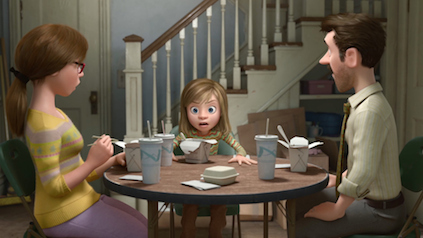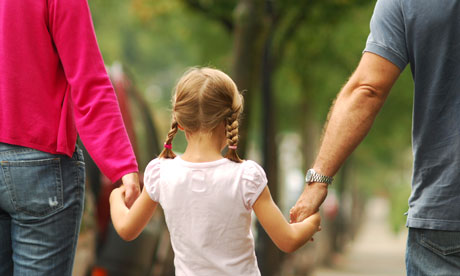Over the centuries, our ideas about good and bad ways to raise a child have changed. For example, in the medieval days, childhood did not really exist. As soon as a child could physically manage, they were put to work, often in roles that would be seen as slavery today. Children were not seen as pure, in fact they were seen as evil and the extraordinary corporal punishment used (which was of course considered normal and commonplace), was used to grant a child salvation and goodness. In this era, even in the most aristocratic households, instead of valuing and adoring their child, some parents took to despising their own children and deliberately belittling and abusing them, thinking it was for their own good.
In the late 1600s, history saw the birth of the punishment and reward style of parenting. Instead of pure corporeal punishment, philosopher John Locke suggested that the better way of training a child to be good would be to withdraw approval and affection by “disgracing” a child when they are bad and to “esteem” the child by rewarding the child with approval and affection when they were good.
In the early twentieth century, not much had changed. Child-rearing experts still formally denounced all romantic ideas about childhood and advocated formation of proper habits to discipline children. In fact, a 1914 U.S. Children’s Bureau pamphlet, Infant Care, urged a strict schedule and urged parents not to play with their babies. John B Watson’s Behaviorism argued that parents could train children by rewarding good behavior and punishing bad behavior, and by following precise schedules for food, sleep, and other bodily functions.
Who could forget the bible proverb that so many parents have lived by and still live by today “Whoever spares the rod hates their children, but the one who loves their children is careful to discipline them.” As if discipline and corporeal punishment are one in the same. In the twentieth century, corporeal punishment began to fall out of favor in the western world. Many parents became conscious enough to see corporeal punishment for what it is, which is abuse. And so, today, while sadly there are still pockets of unconscious parents that still abuse their children in the name of discipline, the larger majority in the western world use parenting practices like timeouts as tools of discipline.
It is easy to look back over time and say that we were living in the dark ages in terms of parenting. But I will tell you that in the years to come, that is exactly how history will see parenting today. History will see many of today’s common practices as barbaric and cruel. We now know how to create a healthy physical climate for our children and for each other. But I am here to tell you that we have no idea how to create a healthy emotional climate for our children or for each other.
Of course there are rare exceptions to this rule, but over the course of human history, the emotional climate of a household has not even factored into the idea of good parenting. Today, we are emerging from a new dark age. We are emerging from the dark age of emotions and feelings. And what we are awakening to is that it is possible to be a good parent to a child on a physical level and a terrible parent to a child on an emotional level. This has vast implication when we acknowledge that emotion is the core of our life and the heart of our relationships.
In today’s world, most parenting advice ignores the world of emotion entirely. It focuses on how to correct misbehavior whilst disregarding the feelings that underlie and cause the misbehavior. Regardless of how far we have progressed, the goal of parenting is still to have a compliant and obedient child, not to raise a healthy adult. The goal is to raise a child who is “good”. Our justice system takes the exact same approach with regards to misbehavior. We are concerned with correcting misbehavior and creating good citizens whilst being unconcerned with the feelings that motivate such misbehavior. Good parenting involves emotion. Good relationships involve emotion.
Today, I ventured to the movie theatre to see a brand new film that was just released called “Inside Out”. I have been chomping at the bit to see it because it is an animation film all about emotion… Just my cup of tea. On the way to the cinema, I had my hackles raised (metaphorically speaking), all prepared to be potentially disappointed by an archaic idea of emotion. I sat there in the dark theatre with my notepad and pen ready to take notes to discuss later in this very blog. A smile spread across my face within the first five minutes. The film turned out to be an absolute pleasure. It is clear that research went into the film on account of many of the highly accurate aspects of the story line. For example, sleep and its function relative to memory, how identity is shaped by key events and the emotions and perspectives associated with those events, how the subconscious is essentially full of the personalities’ many rejections, how memories are distorted so that one recalls a sad aspect of a memory or a happy aspect of the very same memory based on the current emotion that we are viewing those memories through and the list goes on.
All in all, ‘Inside Out’ is an imaginative triumph of an artistic depiction of psychology as it applies to emotion or should we say five emotions: fear, disgust, anger, sadness and joy. In the film, these five emotions essentially control the every day life of the main character, named Riley. In the beginning (mirroring the beliefs of our current American society), it is clear that sadness seems to serve no positive purpose. In fact, sadness is downright unwanted and thus resisted by happiness. Again, I was gearing myself up to be disappointed by the message of the film. But without spoiling the entire plot line of the film, I will say that I was more than pleasantly surprised when the moral of the story cast sadness in an entirely different light. In fact, the film conveyed that sadness was essential to the integrity of Riley’s personality structure. Numbness was in fact the ‘villain’ of the tale. Which spells one thing for me so loudly that I was nearly skipping back to the car in the parking lot after the film finished… SOCIETY IS WAKING UP AND HUMAN CONSCIOUSNESS IS EVOLVING. The overall message of the film was to embrace emotion, even the ones that don’t feel positive.
There is a key moment in the film, when Riley’s mom tells her daughter to cheer up and her father punishes her for her attitude and it only serves to make matters worse. By the end of the film, the parents undergo a kind of parenting makeover as it applies to emotions. Instead of remaining highly un-attuned to their daughter and requiring Riley to be happy because they have determined she ‘should be happy’, they allow her negative emotion. They receive it and even use it to form a deeper connection with their daughter.
I would highly recommend seeing this film, with one exception. I would not recommend taking young children to it. Why? Because the film itself requires abstract thinking. Why? Because unless you can grasp the idea that it is a film made for entertainment value as an artistic depiction, the film clearly conveys the idea that emotions control you. Riley is merely a machine being driven by her emotions, emotions she has no control over. Until a child is old enough to conceptualize of the idea that the true self is beyond thought and emotion and therefore not powerless to emotion (which is the next evolution within human consciousness as it applies to emotion) it could in fact make a child feel totally powerless. It could make a child feel that they are totally powerless to what little beings inside their head decide to do or not which then determines the way they feel. Visual learning is usually much more impactful when it comes to learning, especially for children. And so regardless of verbally telling a child that they really can deliberately choose to influence they way they feel, the visuals of the film could easily ‘trump’ that message and cause a child to feel powerless to their emotions and thus afraid of their own internal guidance system.
Emotions are not fixed, they are ever changing and they are much more like an indicator of perspective that we can use to guide ourselves through life. This should not be interpreted like this: “Stop feeling X, because you can, because how you feel is a choice.” I must be honest and say that I distain the positive quotes flying around that say, “happiness is a choice” or “suffering is a choice”. There is an heir of shame for having persistent negative emotions inherent in those sayings that does not account for the difficulty of switching an emotion that is being fed by persistent thoughts and beliefs. But essentially, the moral of the story is that both the ‘total control’ and the ‘no control’ of emotion approaches do not work. The fusion of both of them however does.
Today, most parents make three crucial mistakes, 1. They disapprove of their children’s emotions, 2. They dismiss their children’s emotions and 3. They offer no guidance to a child with regards to their emotions.
The parent who disapproves of their child’s emotions is critical of their children’s displays of negative emotion and reprimand or punish for emotional expression. The parent, who dismisses their child’s emotions, disregards them as important, ignores their child’s emotions or worse, trivializes their child’s emotions.
And the parent, who offers no guidance, may empathize with their child’s emotions, but does not set limits on behavior or assist the child in understanding and coping with their emotion.
The bottom line is, emotions matter. We must see the importance and value in each other’s feelings. We must show respect for each other’s emotions. We must listen for the feelings behind the words. We must open ourselves to being understood and open ourselves to understanding others. Statements of acknowledgement and understanding should always precede advice. If you tell someone how they should or shouldn’t feel, you are teaching them to distrust themselves. You are teaching them that there is something wrong with them.
Because we struggle the most with negative emotions, the way we deal with negative emotions, dictates how healthy or unhealthy our relationship is emotionally. When we are dealing with negative emotions, there are concrete steps we can take to address those emotions, develop emotional connection with the other person and enhance our intimacy. This goes for our children as well as the adults in our lives. This is solid gold in a relationship when we are facing conflict.
#1. To become aware of the other person’s emotion
#2. To care about the other person’s emotion by seeing it as valid and important
#3. To listen em-pathetically to the other person’s emotion in an attempt to understand the way they feel. This allows them to feel safe to be vulnerable without fear of judgment. Seek to understand, instead of to agree.
#4 To acknowledge and validate their feelings. This may include helping them to find words to label their emotion. To acknowledge and validate a person’s feelings, we do not need to validate that the thoughts they have about their emotions are correct, instead we need to let them know that it is a valid thing to feel the way that they feel. For example, if our friend says, “I feel useless”, we do not validate them by saying “you’re right you are useless”. We could validate them by saying “I can totally see how that would make you feel useless and I would feel the same way if I were you”.
#5. To allow the person to feel how they feel and to experience their emotion fully before moving towards any kind of improvement in the way they feel. We need to give them the permission to dictate when they are ready to move up the vibrational scale and into a different emotion. We cannot impose our idea of when they should be ready or when they should be able to feel differently, on them. This is the step where we practice unconditional presence for someone and unconditional love. We are there as support without trying to “fix” them. Do not be offended if they do not accept your support at this time. There is a benevolent power inherent in offering, that is love in and of itself regardless of what someone does or does not do with it.
#6. After and only after their feelings have been validated and acknowledged and fully felt, help the other person to strategize ways to manage the reactions they might be having to their emotion. This is the step where you can assert new ways of looking at a situation that may improve the way the other person is feeling. This is where advice can be offered.
Now we come to one of the most important parts of emotional health. The fact of the matter is that we are in a relationship with ourselves. This means, our own emotions must matter to us. This means we must acknowledge and validate our own emotions. This means we must not dismiss or disapprove of our own emotions. Therefore, the six steps I have outlined previously in this blog, we must apply to ourselves!
–












Leave a Reply